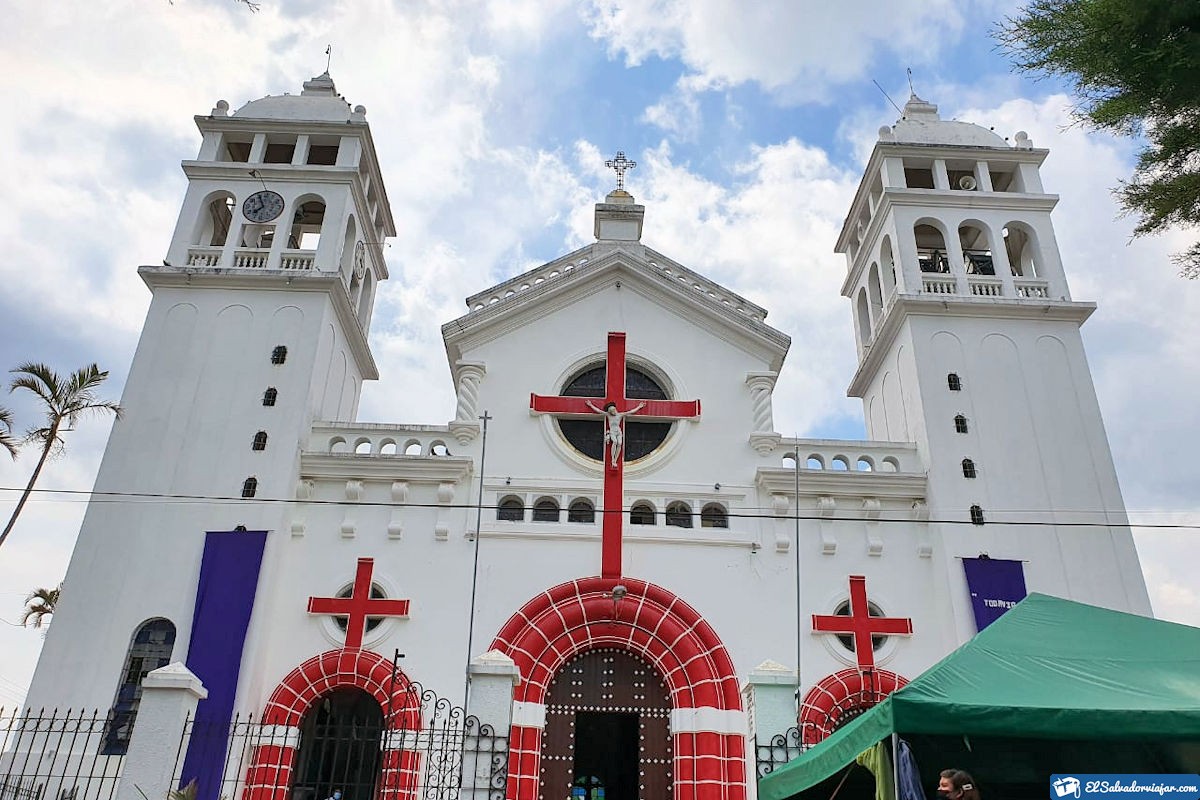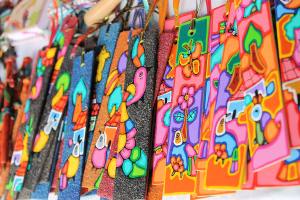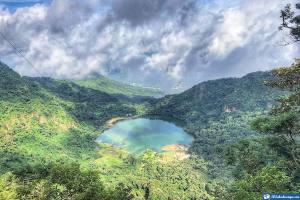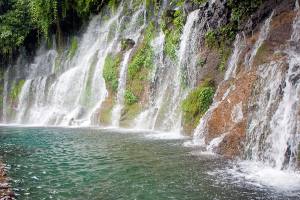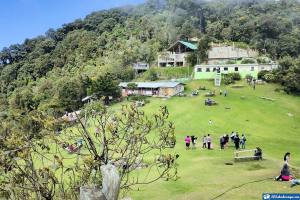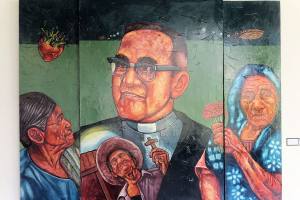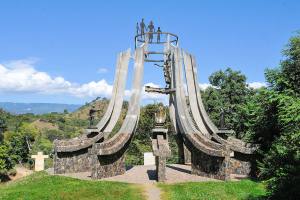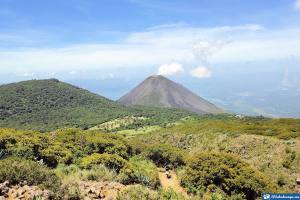For lovers of natural beauty and the spring scent of flowers, we bring you this charming route known by all Salvadorans as the Route of the Flowers. This beautiful tour will let you see a side of El Salvador that you will never forget.
The Route of Flowers is in the Apaneca-Ilamatepec mountain range in the middle of the sectors of Sonsonate and Ahuachapán in the western zone of El Salvador. With a mild climate full of freshness and places full of unforgettable greenery, history, and traditions.
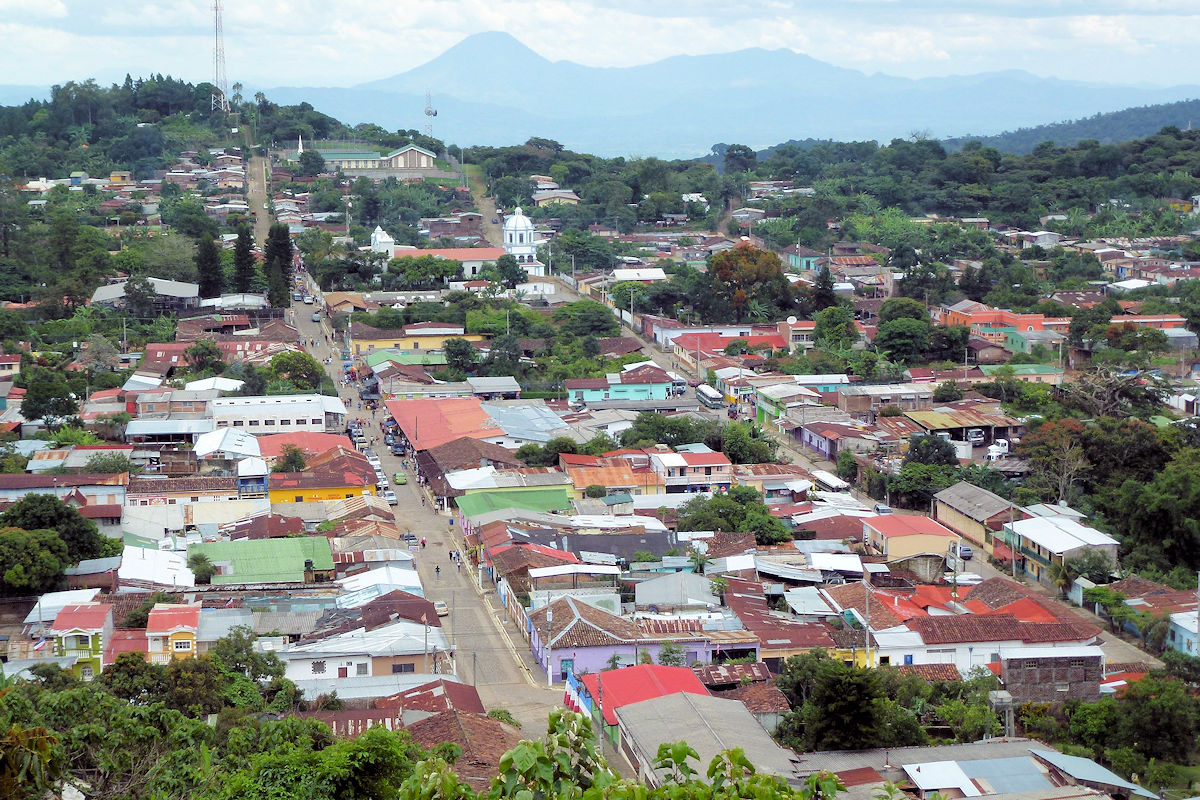
ROUTE OF FLOWERS - Routes of El Salvador. Photo by Randal Sheppard. Flickr.
You have particular and exquisite gastronomy, a diversity of hostels, and cozy hotels. That will undoubtedly make your trip a wonderful experience.
On the other hand, the route is distributed and connected by a road that passes through the municipalities of Concepción de Ataco, Apaneca, Ahuachapán, Nahuizalco, Juayúa, and Salcoatitán. It occupies the highest part of the Apaneca-Ilamatepec mountain range, reaching 2,381 meters above sea level.

Thanks to its historical abundance and the collaboration of actors and foundations, the Route of the Flowers has marked the predominance of international tourism.
Join us on this tour and let yourself be amazed by the diverse tourist areas that surround this route. Discover its fascinating landscapes, beautiful handicrafts, traditions, culture, and gastronomy.
What to see and do in the Route of Flowers?
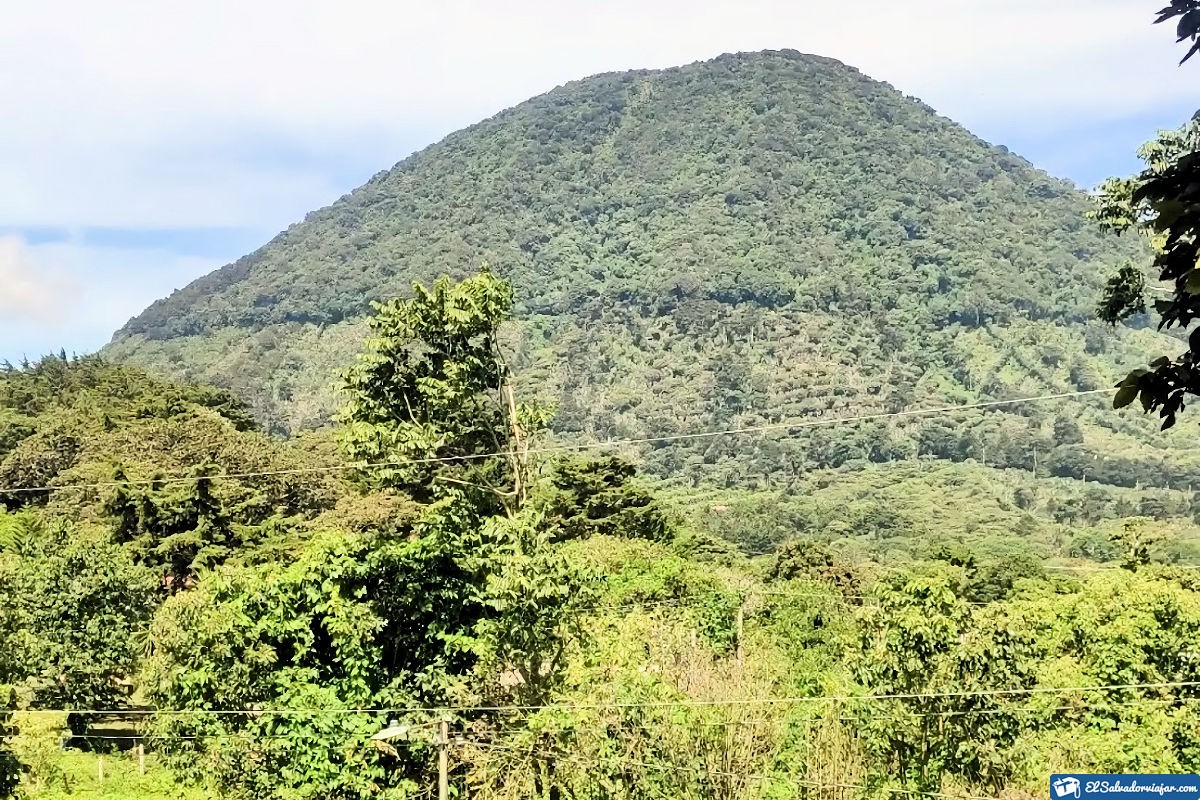
If you are interested in knowing what to see and do on your tour of the Ruta de las Flores, in this section, we tell you the wonders this incredible tour offers. A route that has the most tourist villages of El Salvador.
Nahuizalco
This pre-Hispanic town, named “Cuatro Izalcos” in the Nahuatl language, was inhabited in its beginnings by Pipiles. During the colonial era, it was part of the province of the Izalcos.
This city was named in 1955 and had a great central square and numerous markets. Among them is the night market, where you will find great handcrafted articles, among which stand out those made with tule and wicker.
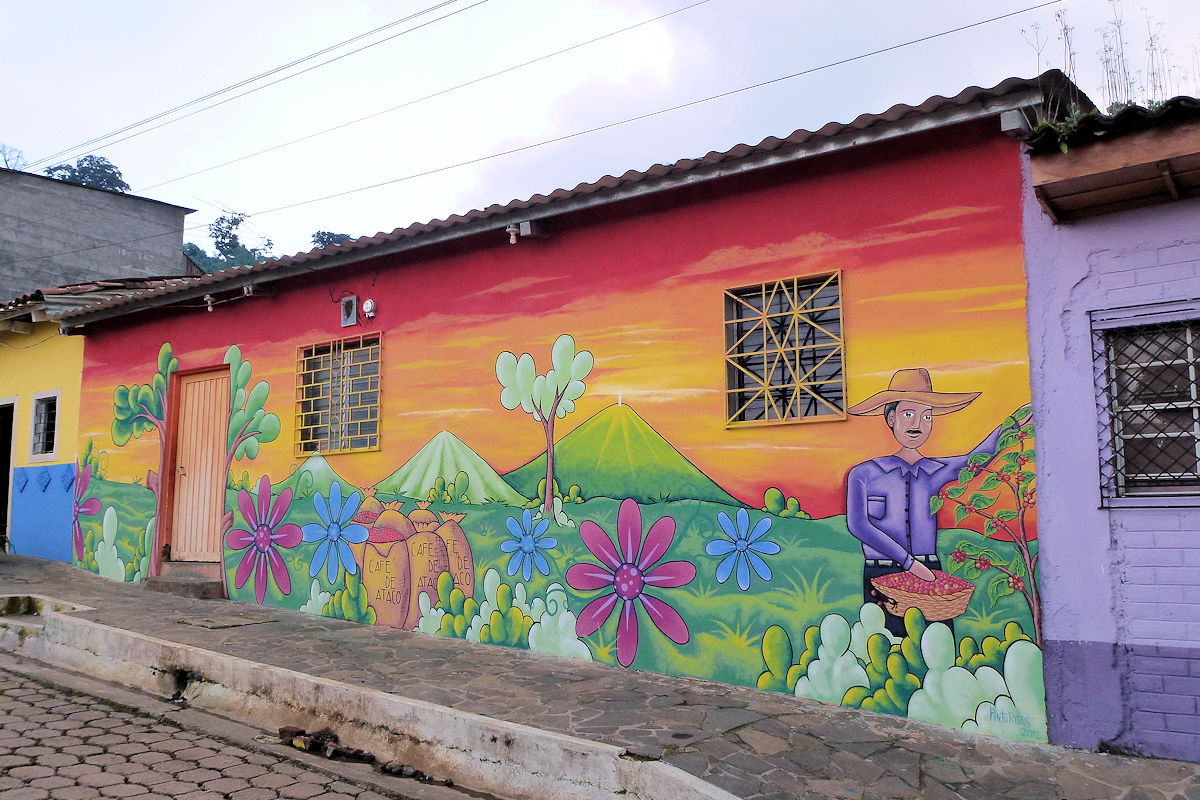
It also has a museum called Museo Conmemorativo Pipil which is very popular and a must for tourists. There you can learn much about the region’s history and its indigenous roots.
You can also see and visit the Church of San Juan Bautista, built in the eighteenth century, be surprised by its Craft Development Center, and marvel at its beautiful waterfalls.
In short, if you start your tour from El Salvador, this will be your first stop, where you will be greeted with faces and reflections of a town full of tradition. You will see its inhabitants wearing their typical costumes, the ladies wearing tight skirts to the hip, and you will marvel at the surrounding landscape wherever you walk.
Salcoatitán
Located at about 1,400 meters above sea level, we find the town of Salcoatitán, whose name in the Nahuatl language means “Place between snakes and quetzals.” Among its main charms is its gastronomy, which can be seen and tasted in the town’s main square.
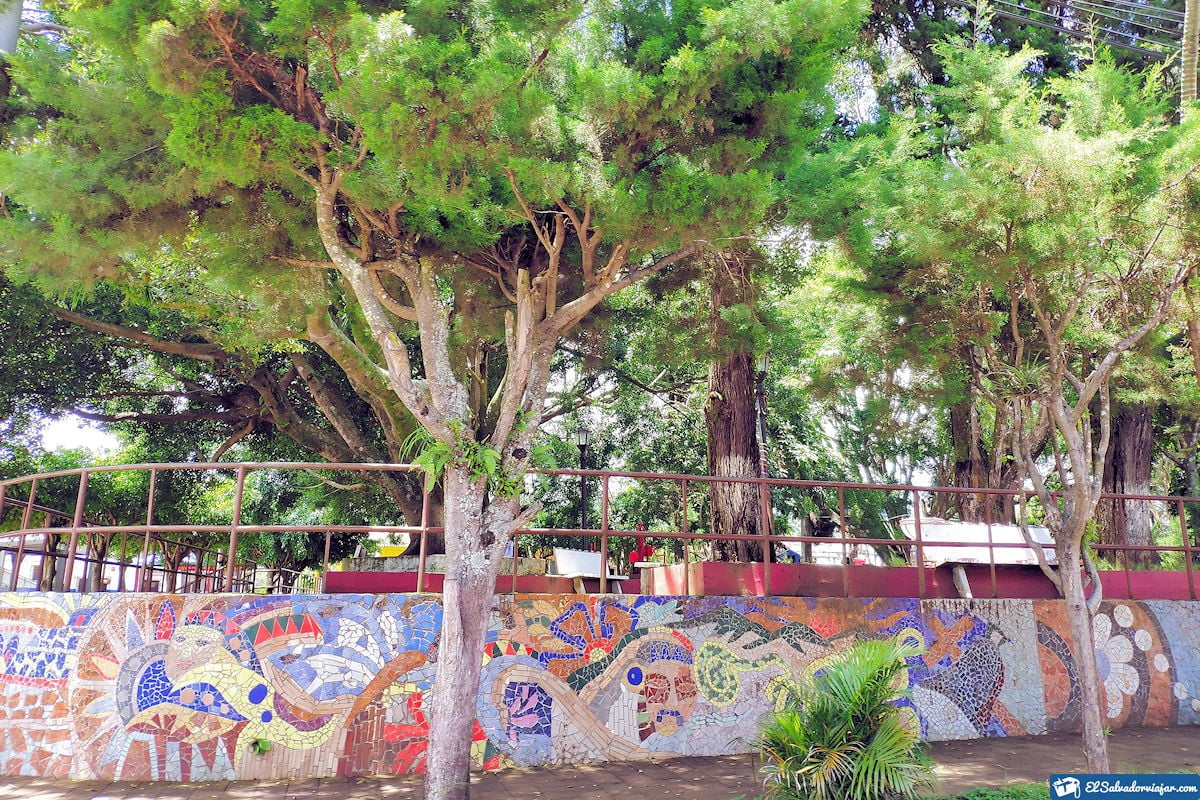
Its craftsmanship and the technique used in elaborating murals, mosaics, and the galleries that exhibit the region’s art, will leave you enchanted. You will be able to be in contact with objects made of wicker, perfectly woven dresses made of cochineal and indigo-pigmented blanket—pieces of culture and art, as well as natural dyes.
In Salcoatitán, you will find an impressive Ceiba with a little more than five centuries of history. For Hispanic Americans, it is a sacred tree in their culture, which is why it was always built at the entrance of the villages.
In synthesis, the Ceiba represents the three orbs of the ancient culture: its roots, the underworld, its trunk, the life on earth, and its highest branches, the life after death.
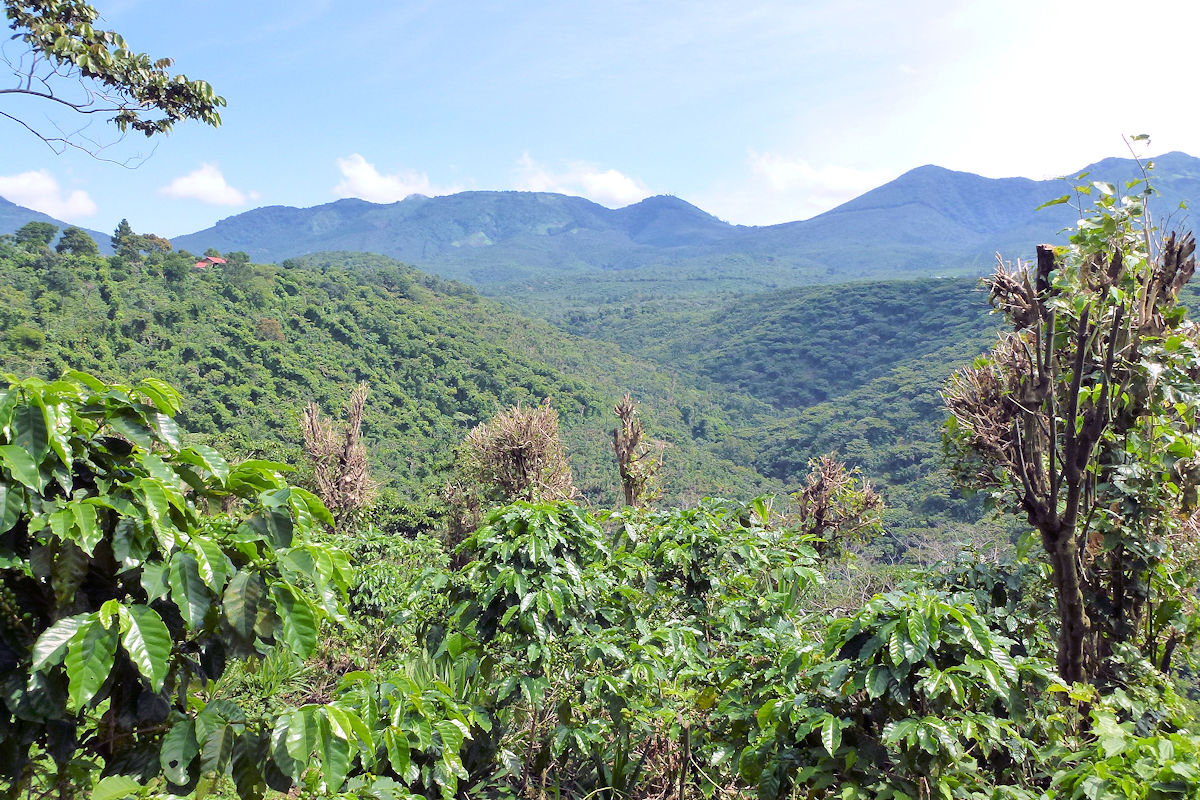
Finally, we have the central park, which will show you the entrance to two beautiful churches right next—a sacred place for devotion and passion for the Christian customs of the site.
Juayúa
The Route of Flowers takes us on a tour of the beautiful pre-Columbian town of Juayúa, whose name in the Nahuatl language means “River of the purple orchids.” This town is at an altitude of 1,025 meters above sea level.
This visit you can not miss offers beautiful ornamental plant nurseries and coffee plantations, and its diverse cuisine is its most unique tourist attraction.
You can enjoy a genuine gastronomic fair held every weekend since 1997 in the city’s heart when passing through this town. Here you can taste its delicious hot plantains and its divine pupusas.
In addition, Juayúa has areas especially arranged to practice ecotourism. For this reason, places like the Lagunilla Azul waterfall, the Monterrey River, El Tequezal, La Laguna Seca, and Las Ranas. The Chorros de la Calera, El Pilón, and Cerro El Águila are beautiful natural places you cannot miss.

For those who wish to give thanks for the experience lived on this tour, you can visit the beautiful church of “Cristo Negro”. Built during the colonial era, it was the center of the pilgrimage of millions of faithful who worship the figure of the Redeemer.
Apaneca
This city stands out for being the highest of all, located about 1470 meters above sea level, and hence its name, which in the Nahuatl language means “Where the winds or rivers of winds abound.“

Thanks to its altitude, it is a high-quality coffee-producing area. Its hotels and restaurants, along with its two beautiful lagoons named “Laguna Verde” and “Las Ninfas,” are the main attraction for tourists.
In Apaneca, you can enjoy the pre-Hispanic culture by finding sculptures of “Gordinflones” on coffee farms. And for those who want sports and ecotourism, this beautiful town offers extreme canopy and buggy tours, hiking, and landscapes.
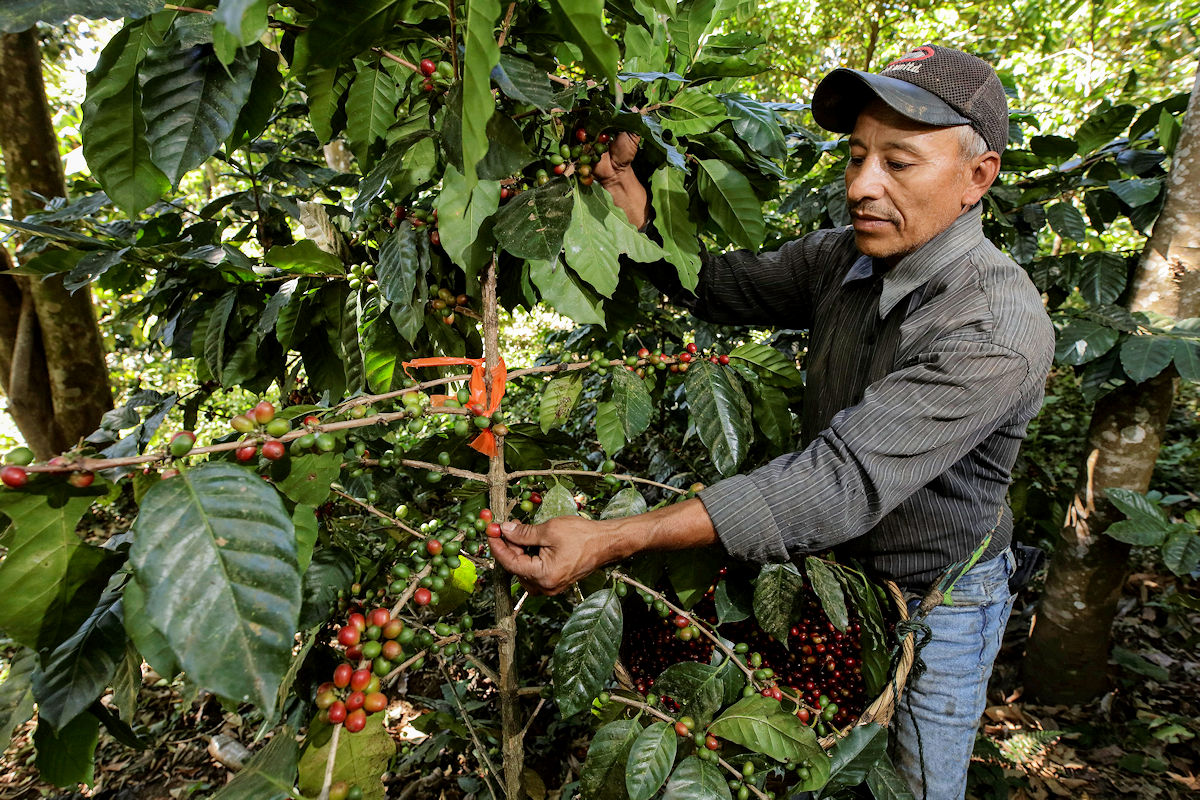
On the other hand, at the beginning of the century, the town of Apaneca lost its church, which at that time was one of the region’s main attractions. But despite this, visitors flock to a beautiful white church that opens its doors daily.
Concepción de Ataco
Undoubtedly this is one of the most famous localities of the Route of the Flowers. Concepción de Ataco is 1260 meters above sea level, and its name in the Nahuatl language means “Place of high springs.”

This beautiful town surrounded by coffee plantations was founded by the Pipil tribes and currently has an urban planning project characteristic of the Spanish colony.
In addition to all of the above, in Ataco, you can enjoy wood-carved handicrafts, lever looms, and the national and gourmet gastronomy that will delight your palate with every taste.
The town of Ataco offers its visitors an entertaining tradition that dates back more than 200 years, known as the Day of the Lanterns. It consists of filling all the streets of the town with colored lights.
One of the main attractions offered by this colorful sector is the tour of the coffee farm Beneficio El Carmen. In this tour, you will learn more about this essential industry in the area.
And what will not go unnoticed in this Route of Flowers are its beautiful and impressive murals that you can enjoy throughout the main streets of the place. It gives an unprecedented display of color and history through unparalleled artistic manifestations.
Ahuachapán
Finally, in the westernmost part of El Salvador, we find the beautiful city of Ahuachapán, whose name in the Nahuatl language means “City of the house of oaks.”
This beautiful Salvadoran area offers all its visitors numerous tourist attractions, among which the Church of Our Lady of the Assumption stands out—located in the historic heart of the city.
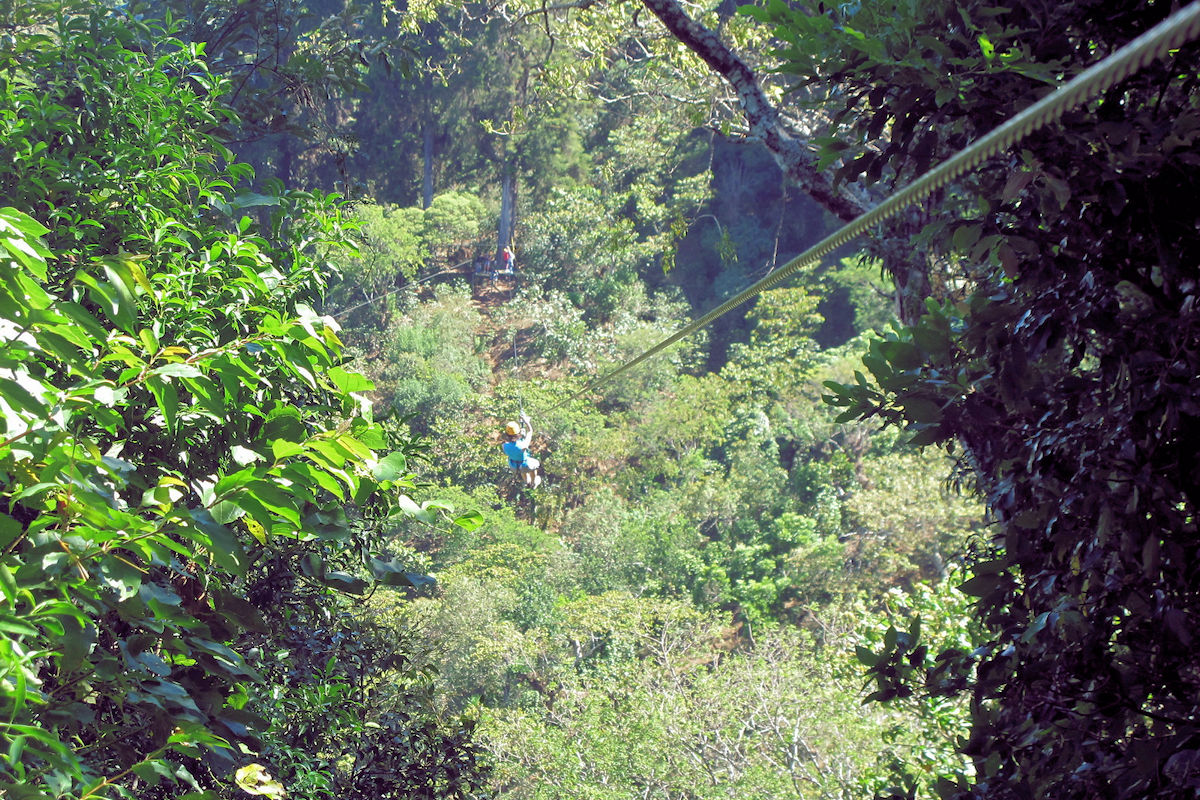
In addition, in this section of the Flowers Route, you will be able to appreciate the passage of La Concordia, which is next to the temple. In addition, the birds and trees are characteristic of the place and the Alfredo Espino Center for Culture and the Arts. In addition, you can marvel at the geothermal manifestations that emanate from the earth and are called Ausoles.
In conclusion, these beautiful and striking colonial-style towns stand out for their Spanish-American history. Colorful houses are arranged in a grid pattern leading to the main square adorned with many flowers and an imposing temple with a garden.
For those who take El Salvador as an option for travel and tourism, the Ruta de las Flores is a must for a first trip.
Visiting Tips
It cannot compare the variety of activities the Route of Flowers offers. Here is just a small account of what awaits you.
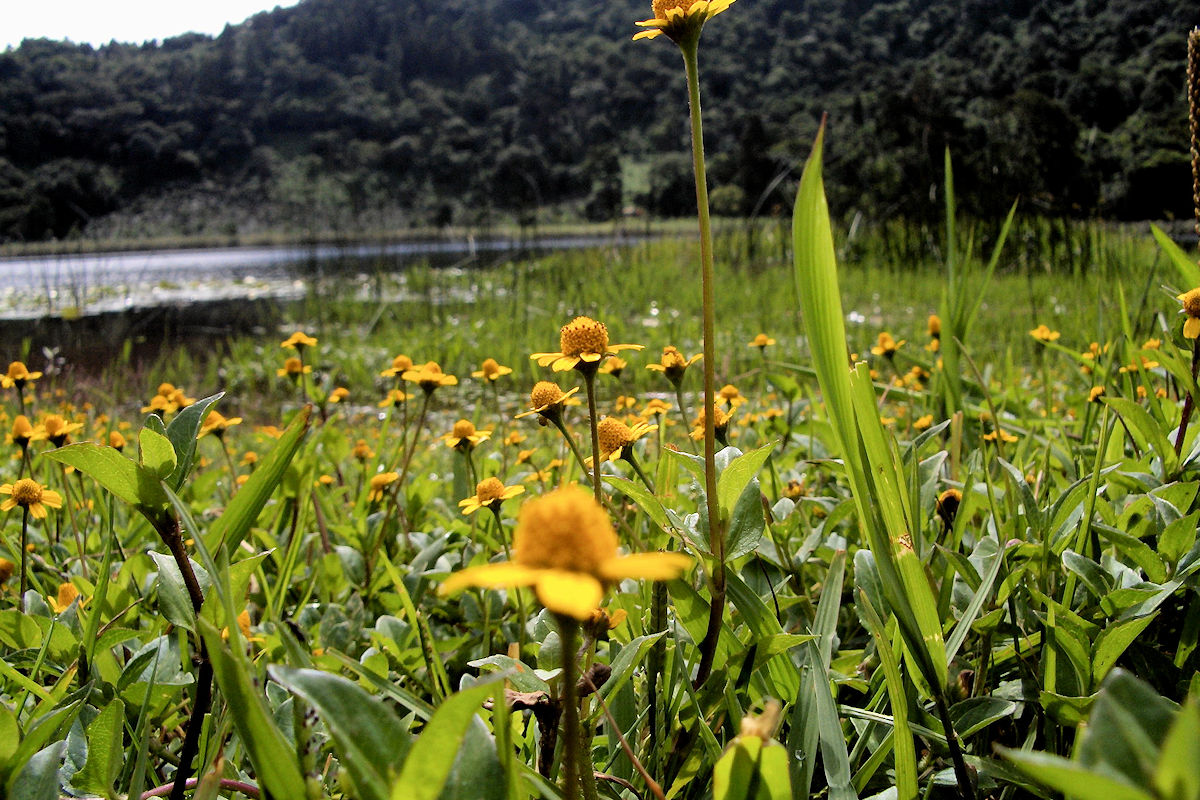
- Los Chorros de la Calera: incredible waterfalls to spend a day with family or friends during your stay in Juayúa.
- Gastronomic Festival: every weekend is also available in the town of Juayúa.
- Laguna de las Ranas: a protected natural reserve that you must access with a guide or in the company of the region’s security forces.
- Concepción de Ataco: one of the obligatory visits is to the Atzumpa Pools and La Cruz del Cielo Lindo.
- Los Historiantes: the essential traditional dance group of Nahuizalco. A feast during their festivities between June 20 and 25.
- Fried yucca: by far, the most typical dish of this region; you can taste it during your visit to Salcoatitán.
- The viewpoints: from beginning to end, you will find a variety of perspectives along the road from where you will have the most beautiful views of the Ruta de las Flores.
To enjoy all these wonders, you must consider staying a few days in these municipalities and following the recommendations we offer below.
Search for a lodging in the Route of Flowers
Each town can find different hostels, inns, and hotels you can use to stay in. Our recommendations for lodging in the Ruta de las Flores are:
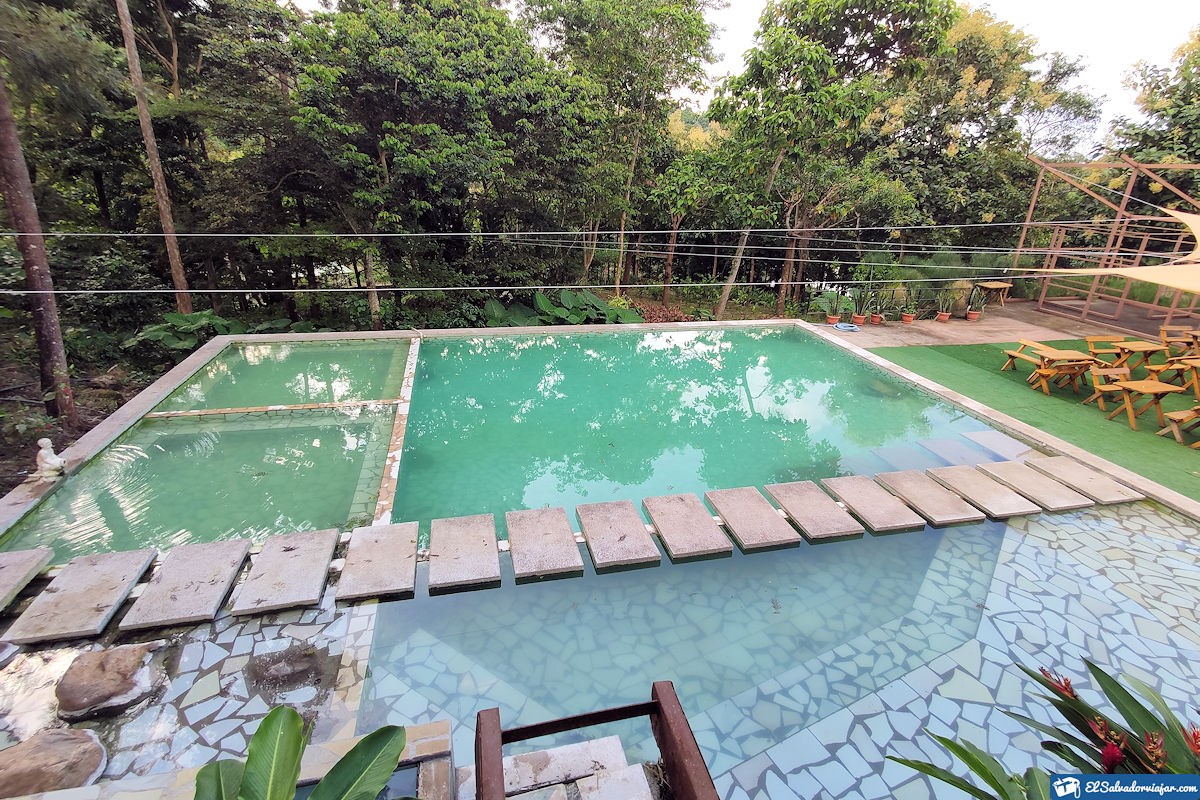
- Santa Teresa Thermals: Located in Apaneca, it is a favorite tourist place. They are cabins surrounded by extreme nature. It has thermal pools of different temperatures. Ideal for resting from daily stress.
- Casa Degraciela Hotel Boutique. It is a beautiful lodging hotel with colonial architecture with all the services in the style of the XXI century.
- Hotel Mision de Angeles. With an incredible view, dreamy gardens, and spacious, comfortable, and safe rooms.
- Hostal Deyluwin. It has a bar, private parking, a connection to the airport, a garden, and dream rooms.
- Capanna I’Attico. It offers a complete lodging service and restaurant, and if you like, you can go hiking with one of its tour guides.
You must make your reservations at least one week before your trip.
Bring enough money to cover your expenses
El Salvador is one of the countries where it is recommended to redeem your money before your trip. Although it is a beautiful country, El Salvador does not have an extensive network of ATMs to make it easy for you to withdraw money.
In addition, you may want to buy some handicrafts, and you will need cash. People selling on the street usually ask for money only. So if you are coming from abroad, keep in mind that there are few money exchange houses. You can only do it in ATMs, usually in supermarkets, shopping malls, or gas stations.
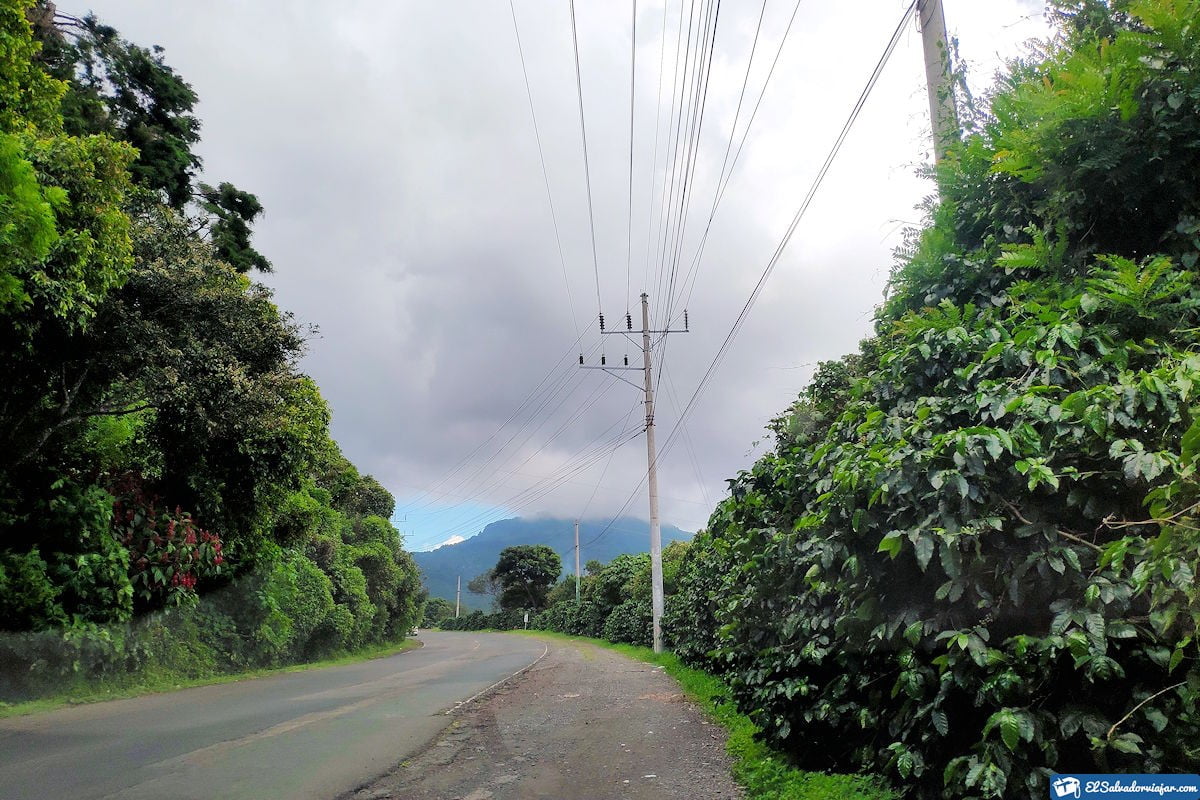
In case you have a credit card, this may be your best option since among the advantages it offers are:
- It allows withdrawals from ATMs 3 times in the same country without commission cost.
- You can cancel your consumptions and purchases in any establishment without exchange commissions for the currency.
- You can recharge it according to your requirements through your cell phone and an app.
Do not do the route unaccompanied by a guide or a member of the police.
Although the Ruta de las Flores seems to be a simple route, there are natural areas that pose a high risk to the safety of tourists. In general, natural and ecotourism areas are difficult to access.
So if you do not know the area, you may get lost in the forest or mountain. If you go to La Laguna de las Ranas, being a reservation, its space is destined to protect wildlife.
Therefore, only a few trails are used to reach it without endangering the natural habitat, and therefore, access may be limited. If you go with the help of a member of the security corps of the region, you can be sure that you will not run any risk.
Bring comfortable clothes and plenty of water.
The Ruta de las Flores of El Salvador offers a wide range of outdoor activities, so we suggest you wear comfortable shoes and clothing. Remember that the terrain of the archaeological areas, villages, and areas with abundant vegetation can be very long and complex.
Finally, bring plenty of water and snacks for the tour. Remember that there are many places to visit, and you may not have time to stop for lunch, even more so if you are heading to a natural or mountain area.
